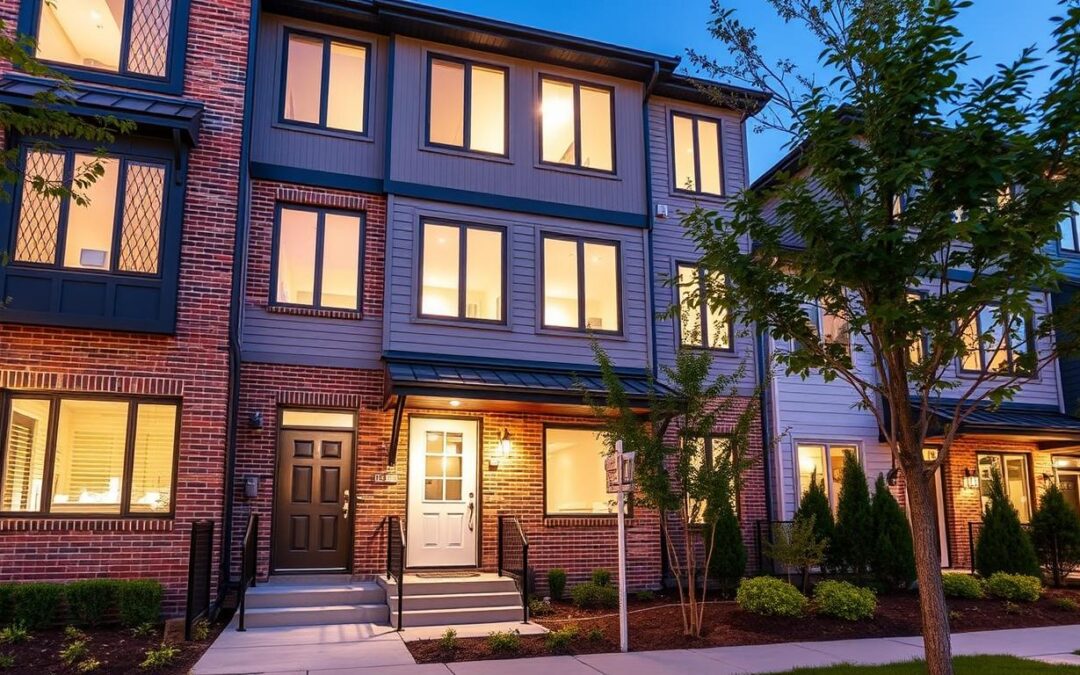A townhouse is a special type of home that combines the best of single-family homes and multi-unit buildings. It’s a home you own, with multiple floors, and is usually attached to other homes. Unlike apartments, you own the inside and outside of your townhouse.
These homes are loved in cities and suburbs. They offer a great choice between single-family homes and condos. Townhouses usually have 1,300 to 1,500 square feet of space, spread over several floors.
People like townhouses for their unique design. They often have their own entrance and you own the land under your home. This makes townhouses a great option for first-time buyers and families who want a good balance of price and space.
Key Takeaways
- Townhouses offer multifloor living with attached unit configurations
- Owners have complete control over interior and exterior spaces
- Typically more affordable than single-family homes
- Provide more living space compared to traditional apartments
- Common in urban and suburban residential settings
- Often feature two or more stories of living space
Understanding Townhouse Basics
Townhouses are a special type of housing that falls between single-family homes and apartments. They have a long history and are now found in cities and suburbs.
Historical Evolution of Townhouses
In early England, townhouses were homes for the wealthy who lived mostly in the countryside. Urban living spaces were a smart choice for those needing a place in the city.
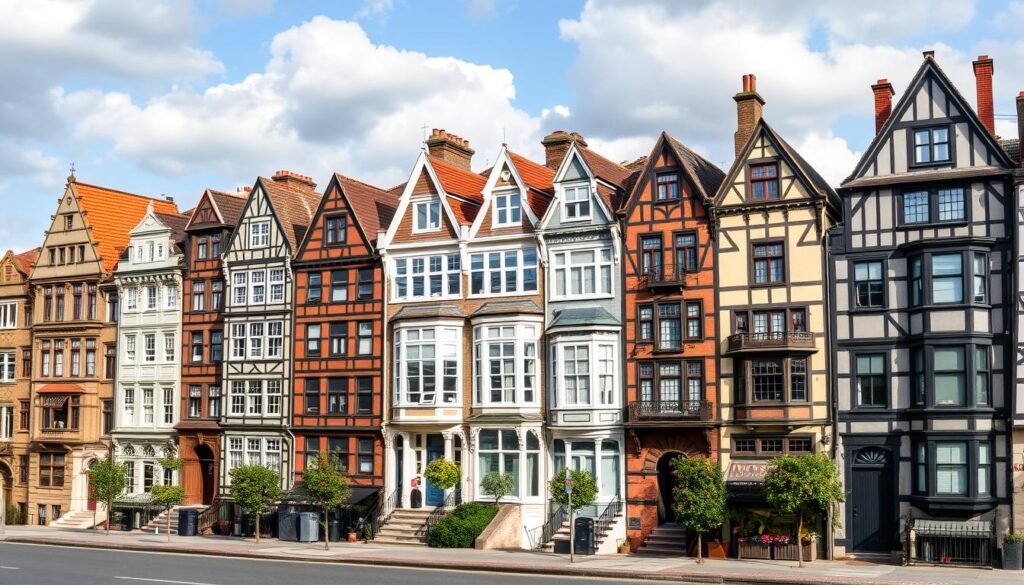
“Townhouses emerged as a sophisticated urban housing solution that maximized limited space while providing comfort and style.” – Urban Housing Historian
Modern Townhouse Characteristics
Today’s townhouses have unique features that make them stand out. They often have:
- Multi-story design with vertical living spaces
- Shared walls with neighboring units
- Compact footprint in urban or suburban settings
- Often part of planned residential developments
Types of Townhouse Structures
| Townhouse Type | Key Features | Typical Location |
|---|---|---|
| Traditional Row Townhouse | Connected units in a single row | Urban centers |
| Stacked Townhouse | Multiple units vertically stacked | Dense urban areas |
| End-Unit Townhouse | Located at the end of a row | Suburban developments |
Townhouse communities are growing in popularity. They offer a good mix of affordability, community, and personal space. This makes them appealing to many homeowners.
What Is a Townhouse
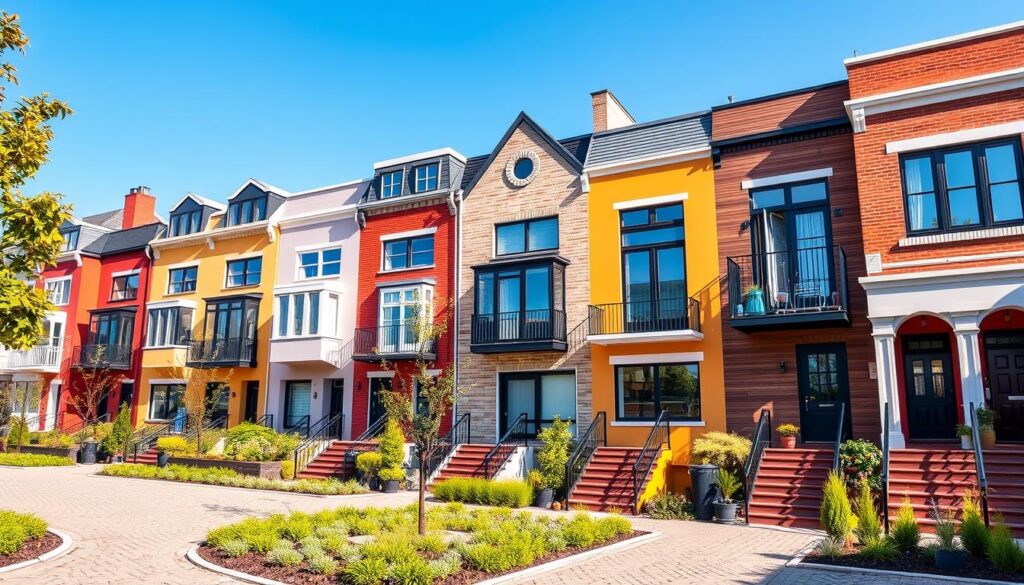
A townhouse is a special type of home that falls between apartments and single-family houses. These homes are built up, with each unit sharing walls with others. This makes for a unique urban living experience. Unlike apartments, townhouse owners own their home inside and out.
Key characteristics of townhouses include:
- Vertical living with multiple floors
- Shared walls with adjacent properties
- Individual ownership structure
- Often part of a planned community
“Townhouses offer a perfect blend of community living and private ownership, making them an attractive option for urban dwellers.”
When we compare townhouses to apartments, we see big differences. Townhouse owners have more rights and space. Typically spanning two or three stories, these homes offer more room than apartments. They often have private entrances and small outdoor areas.
| Feature | Townhouse | Apartment |
|---|---|---|
| Ownership | Full property ownership | Rental/leased space |
| Living Space | Multiple floors | Single-level unit |
| Maintenance | Partially managed by HOA | Managed by property management |
Most townhouse communities are in cities and suburbs. They appeal to those looking for a less expensive option than single-family homes. With HOA fees from $200-$300 a month, they offer a good mix of homeownership and community life.
Townhouse Ownership Structure
Understanding townhouse ownership means knowing the special rights and duties it brings. It’s a mix of personal control and community living, different from other homes.
Property Rights and Responsibilities
People who own townhouses have full rights over their space. They own their unit and the land it’s on. This is different from condos, where owners might not own the land.
- Complete ownership of the individual unit
- Responsibility for interior and exterior maintenance
- Direct control over property modifications
Common Areas and Shared Spaces
Townhouse communities have shared areas that make living better. These include:
- Recreational spaces
- Fitness centers
- Parking areas
- Landscaped grounds
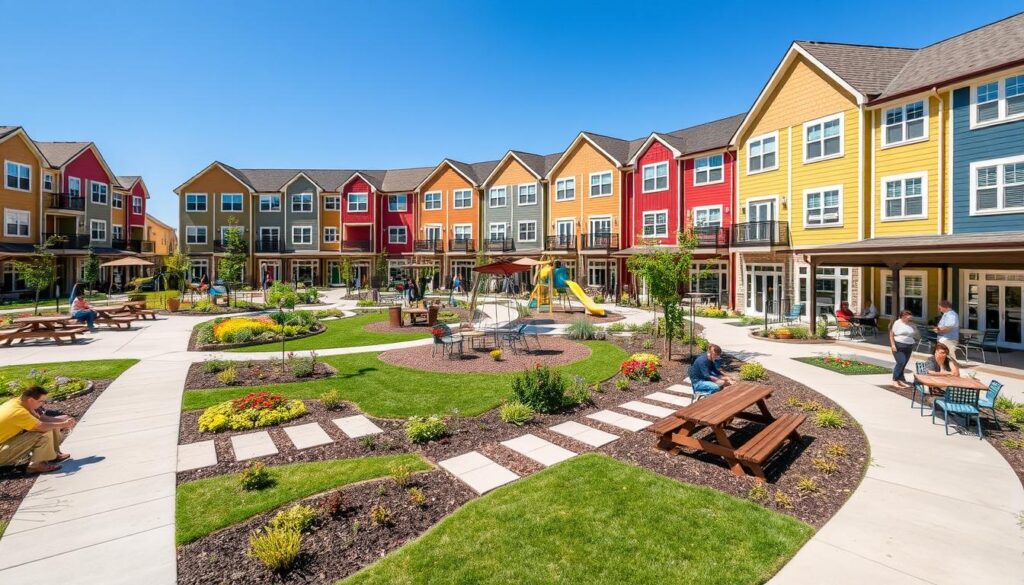
Legal Considerations
It’s important to know the law about townhouse ownership. Homeowners’ associations (HOAs) help manage shared areas and set rules.
| Ownership Aspect | Townhouse Specific Details |
|---|---|
| Property Boundaries | Typically includes unit and immediate land |
| Maintenance Responsibilities | Owner-managed with possible HOA help |
| Community Restrictions | HOA rules and agreements apply |
“Townhouse ownership combines the benefits of individual property control with the advantages of community living.” – Real Estate Experts
Before buying, read HOA documents and understand what you’ll need to do. Think about the costs of owning a townhouse in your community.
Townhouse vs Single-Family Home Comparison
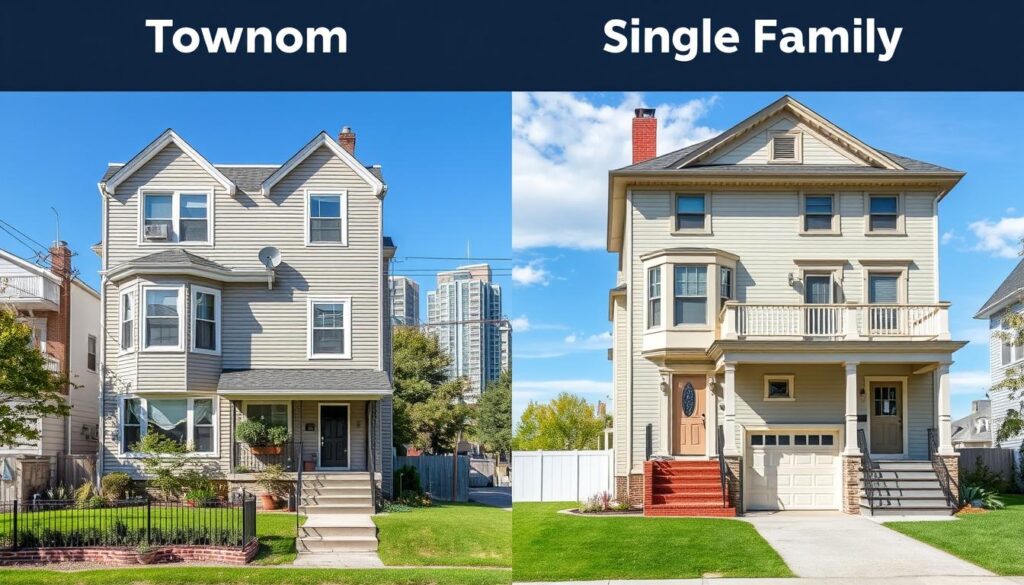
When looking at housing options, knowing the differences between townhouses and single-family homes is key. Each type has its own benefits and drawbacks that affect your lifestyle, budget, and personal taste.
The main differences between townhouses and single-family homes are clear in several areas:
- Space and Layout
- Townhouses have vertical designs with multiple levels
- Single-family homes have bigger, horizontal spaces
- Ownership Structure
- Townhouses usually mean joining an HOA
- Single-family homes give you full control over your property
Homebuyers need to think about what makes each type unique:
| Feature | Townhouse | Single-Family Home |
|---|---|---|
| Square Footage | Usually smaller (1,000-1,800 sq ft) | Generally bigger (1,500-3,000 sq ft) |
| Maintenance | Shared exterior upkeep | Full responsibility for the owner |
| Privacy Level | Shared walls, closer neighbors | Standalone, more privacy |
| Cost | Lower initial cost | Higher purchase prices |
The location is also important in choosing between a townhouse and a single-family home. Townhouses are common in cities, while single-family homes are more found in suburbs and rural areas. Your personal needs, budget, and lifestyle will help decide which is best for you.
*The right home is not about size, but about finding a space that matches your unique living needs.*
Key Differences Between Townhouses and Condos
Choosing between a townhouse and a condo can be tough. Each has its own special features that affect who owns it, who takes care of it, and how much it costs.
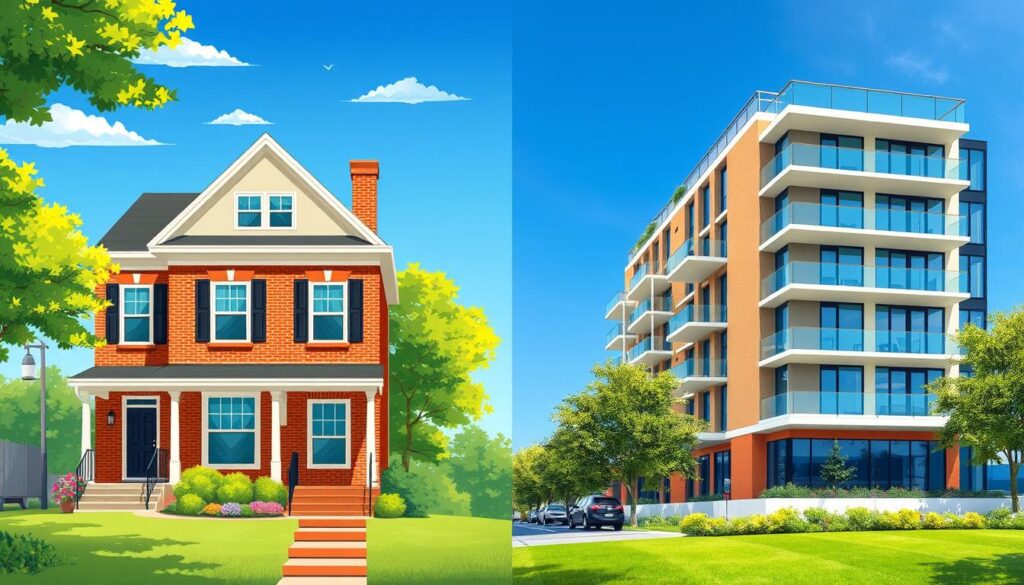
Ownership Rights
One big difference is who owns what. Townhouse owners get to own the inside and outside of their place. But condo owners only own the inside of their unit.
- Townhouse ownership often includes the land and exterior
- Condo ownership is limited to interior unit space
- Townhouses provide more individual property control
Maintenance Responsibilities
Who takes care of the property is another big difference. Townhouse owners usually handle upkeep themselves. But condo owners count on their homeowners associations (HOA) for maintenance.
| Aspect | Townhouse | Condo |
|---|---|---|
| Exterior Maintenance | Owner Responsible | HOA Managed |
| Landscaping | Owner’s Duty | Typically HOA Managed |
| Structural Repairs | Owner Responsible | Shared HOA Expense |
Cost Considerations
Money matters a lot when deciding between a townhouse and a condo. Condos might cost less to buy but have higher monthly fees. Townhouses might need a bigger upfront payment.
“The national median HOA fee for a condo is $290 per month, significantly impacting long-term housing expenses.”
Before making a choice, think about your budget, lifestyle, and future plans. This will help you decide if a townhouse or condo is right for you.
Benefits of Townhouse Living
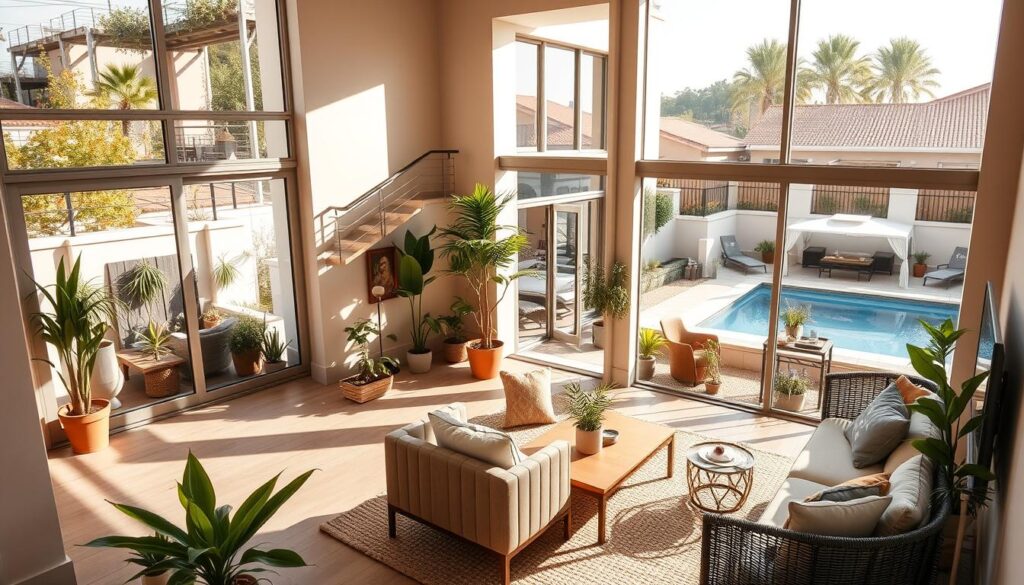
Townhouse living is a mix of affordability, convenience, and community. It’s perfect for those looking for a balance between privacy and shared spaces. These homes are great for individuals and families alike.
There are many benefits to townhouse living. Here are some key ones:
- More affordable entry into homeownership compared to single-family homes
- Reduced maintenance responsibilities
- Access to community amenities
- Strategic urban and suburban locations
Financially, townhouses have their pros and cons. They are smaller, which means lower prices and less upkeep. Young professionals and first-time homebuyers often find townhouse living an attractive option.
“Townhouses offer the perfect middle ground between apartment living and single-family home ownership.”
Community features make townhouse living even more appealing. Many have shared amenities like:
| Amenity | Typical Availability |
|---|---|
| Swimming Pool | Common in planned communities |
| Fitness Center | Frequently offered |
| Shared Green Spaces | Standard in most developments |
| Playground | Popular in family-oriented complexes |
Townhouses offer about 90% of the space of single-family homes but are more compact. They have two to three stories, providing lots of living space without the big maintenance needs of larger homes.
When thinking about townhouse living, it’s important to know about ownership types. Buyers can choose between condominium ownership (just the interior) or fee simple ownership (both interior and exterior). Each has its own benefits.
Potential Drawbacks of Townhouse Ownership
Townhouses are attractive, but buyers should think about the downsides before buying. Knowing the challenges can help you decide wisely.
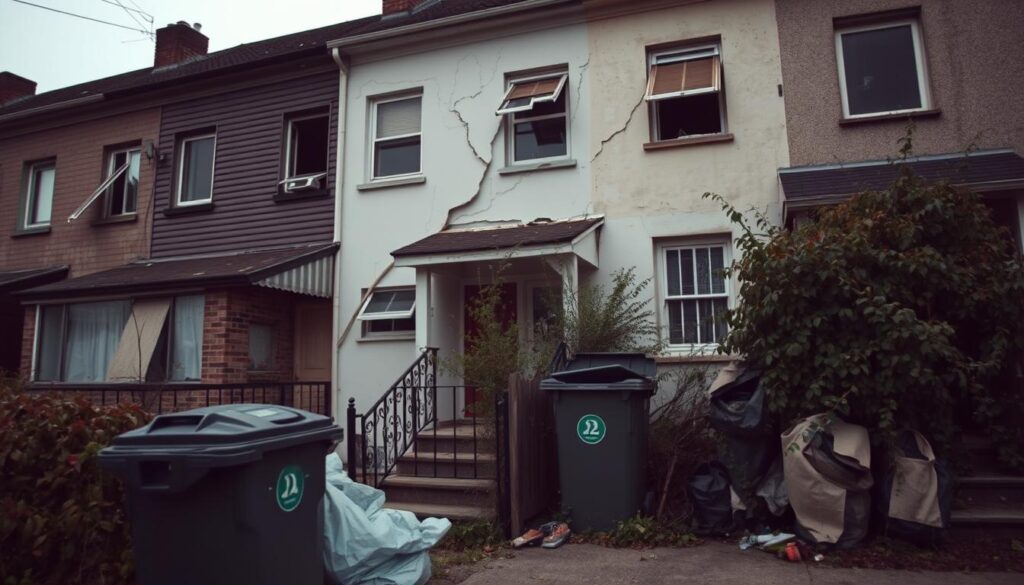
Privacy Challenges in Townhouse Living
Townhouse living has unique privacy issues. Most townhouses share walls with neighbors, affecting personal space and noise. Residents often have less privacy than those in single-family homes.
- Shared walls reduce sound insulation
- Close proximity to neighbors limits personal space
- Limited control over noise and possible disruptions
Resale Value Considerations
Resale value can be a challenge for townhouse owners. Townhouses might not increase in value as quickly as single-family homes.
- 38% increase in townhouse construction in 2021 may impact future values
- HOA restrictions can limit personalization and upgrades
- Smaller market of buyers compared to traditional homes
Maintenance Challenges
Maintenance is a big responsibility for townhouse owners. Unlike condos, they handle exterior upkeep while following HOA rules.
- Exterior maintenance responsibilities
- Potential HOA fees ranging from hundreds to thousands of dollars
- Coordinating repairs with neighbors and HOA
“Understanding the drawbacks is key to making a smart townhouse ownership choice.”
Prospective buyers should weigh these challenges against the benefits. This will help them decide if a townhouse fits their lifestyle and financial plans.
Understanding HOA Rules and Regulations
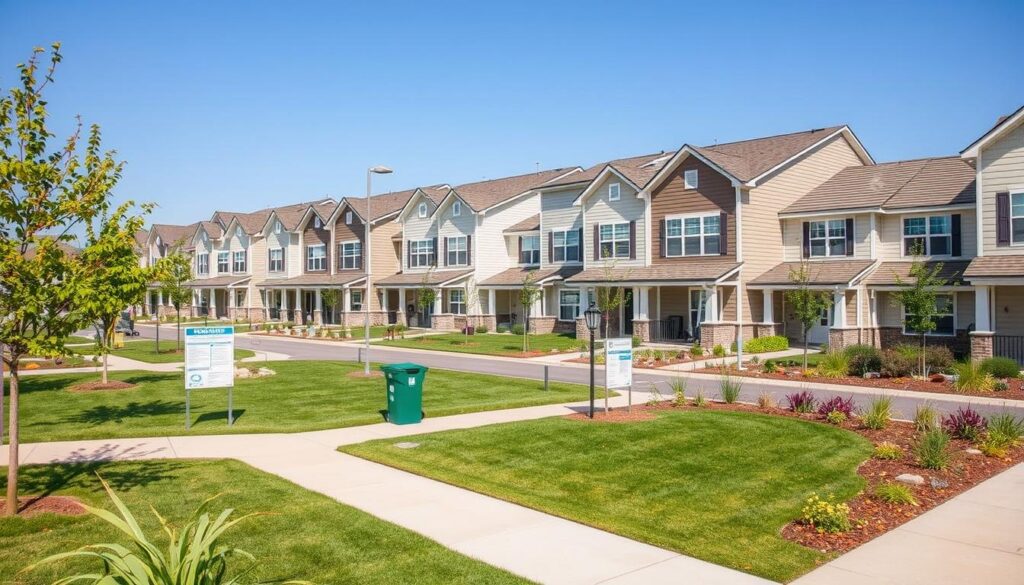
Homeowners’ Associations (HOAs) are key in townhouse communities. They make and enforce rules to keep property values up and living environments cohesive.
HOA rules touch on many parts of daily life. They cover:
- Exterior home appearance and maintenance
- Landscaping standards
- Parking restrictions
- Noise limitations
- Pet policies
“HOA rules are designed to protect property values and ensure a consistent community standard.” – Real Estate Expert
Money matters a lot in townhouse ownership. HOA fees are usually $100 to $700 a month. They pay for shared stuff and upkeep.
- Common area upkeep
- Landscaping services
- Community facility maintenance
- Building insurance
It’s key to know HOA rules before buying a townhouse. Buyers should look at the association’s rules, fees, and how it’s run. This helps match their lifestyle and budget.
Even though HOA rules might seem strict, they have big pluses. They keep property values high, make sure everything looks good, and offer shared stuff that’s hard for one person to handle.
Cost Considerations for Townhouse Ownership
Buying a townhouse requires careful financial planning. You need to understand various costs involved. This includes the initial purchase price, ongoing expenses, and long-term financial commitments.
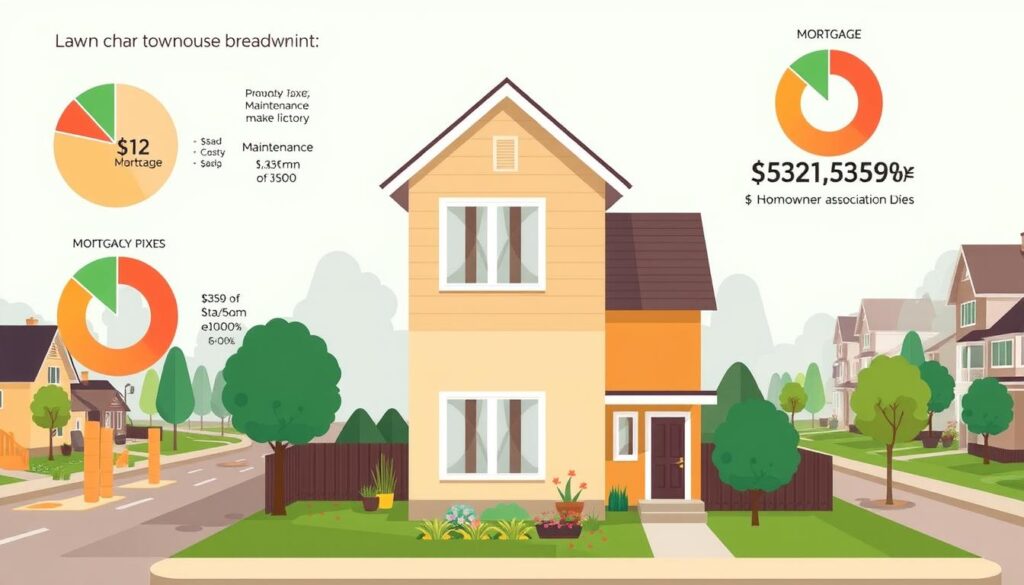
Purchase Prices and Market Dynamics
The median sale price of a U.S. townhouse is $380,668. This is lower than the $453,734 for detached single-family homes. This $73,066 difference is a big chance for buyers looking to save money.
Monthly Expenses Breakdown
- Mortgage payments
- Property taxes
- Homeowners Association (HOA) fees
- Utilities
- Maintenance costs
HOA fees for townhouses usually range from $100 to $500 a month. These fees cover shared amenities and maintenance. They include:
- Landscaping
- Snow removal
- Community pool maintenance
- Exterior building upkeep
Long-term Financial Planning
Successful townhouse ownership needs smart financial planning. A typical down payment is 20% of the purchase price. Buyers should also think about HOA fee increases and property value growth.
Understanding the complete financial picture is key to making a smart townhouse purchase.
Interest rates are very important for townhouse affordability. Lower rates can save homeowners a lot of money over time. It’s vital to compare rates from different lenders.
Location and Community Features
Choosing the right location is key when looking at townhouse communities. The area and amenities can greatly affect your life and property value. Buyers should look at what makes townhouse living special, beyond just the house.
Important location factors for townhouse living include:
- Proximity to urban centers
- Access to public transportation
- Nearby shopping and entertainment options
- Quality of local school districts
- Future development plans in the area
Modern townhouse communities offer great shared amenities. These can make living there better. Some examples are:
- Swimming pools
- Fitness centers
- Landscaped green spaces
- Communal gathering areas
- Security features
Townhouse living offers a unique blend of community connectivity and individual homeownership.
Real estate data shows townhouses are getting more popular. In 2020, they made up 11% of new single-family homes. This shows they’re appealing to many buyers.
| Location Factor | Impact on Townhouse Value |
|---|---|
| Urban Proximity | High Value |
| Community Amenities | Significant Attractiveness |
| School District Quality | Strong Resale Influence |
Townhouse living is more than just a home. It’s a choice that values community and shared experiences. By researching the location, buyers can find the best fit for their needs.
Financing Options for Townhouse Purchase
Buying a townhouse means looking at different financing plans. Buyers have many loan options, each with its own benefits and rules.
The most common ways to finance a townhouse include:
- Conventional Loans
- FHA Loans
- VA Loans
- USDA Loans
“Understanding your financing options is key to owning a townhouse.” – Real Estate Financial Experts
FHA loans are great for first-time buyers. They let you buy with just 3.5% down and are more flexible with credit. If your credit score is around 580, you might qualify, making it easier to own a townhouse.
| Loan Type | Down Payment | Credit Score |
|---|---|---|
| Conventional Loan | 5-20% | 620+ |
| FHA Loan | 3.5% | 580+ |
| VA Loan | 0% | 640+ |
Veterans and active military can use VA loans for townhouse purchases. These loans often have no down payment. It’s a great chance for service members to own a home with little upfront cost.
Pro Tip: Always compare different lenders and know their specific rules for townhouse loans. Some lenders might have special requirements not found in standard loans.
Tips for Buying a Townhouse
Buying a townhouse needs careful planning and a smart approach. Homebuyers must think about many things to make a good choice.
Before you buy a townhouse, it’s important to know the basics. The National Association of Realtors says townhouses are a popular choice in the U.S. They are appealing to many.
Property Inspection Guidelines
Getting a detailed property inspection is key when buying a townhouse. Pay close attention to these areas:
- Structural integrity of shared walls
- HVAC system functionality
- Roof and exterior condition
- Plumbing and electrical systems
Documentation Review
Look over important documents carefully before buying:
- Homeowners Association (HOA) rules and regulations
- Financial statements of the community
- Special assessment histories
- Maintenance records
Negotiation Strategies
Good negotiation is key when buying a townhouse. Here are some tips:
| Strategy | Potential Benefit |
|---|---|
| Compare market prices | Leverage fair pricing |
| Review HOA fees | Understand total ownership costs |
| Examine community amenities | Assess property value |
Pro tip: Always get a professional home inspection and review all documentation carefully before finalizing your townhouse purchase.
Remember that townhouses offer unique living experiences with cost savings and community benefits. But, they also come with shared spaces and HOA rules to consider.
Conclusion
Townhouse ownership is a smart choice for many Americans. It balances affordability with lifestyle. Townhouses have large living areas, often over 1,500 square feet. They are a great option compared to single-family homes or apartments.
Choosing townhouse living is more than just size. About 60% of owners are very happy with their choice. They like features like many bedrooms, garages, and energy-saving designs. The community feeling and personal property rights make it appealing.
It’s important to know the details of townhouse ownership. This includes HOA fees and who takes care of maintenance. By thinking about your needs, budget, and future goals, you can decide if a townhouse fits your life. Townhouse living is a modern, flexible choice between renting and owning a home.
If you’re thinking about owning a townhouse, start by doing your homework. Plan your finances and think about what you want from townhouse living. With the right approach, it can bring comfort, community, and a good investment.
